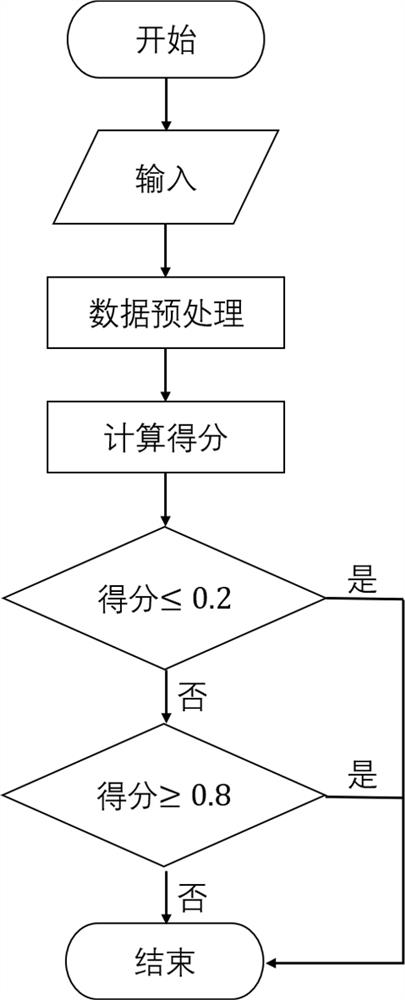Coronavirus sequence recognition method based on gated recurrent unit neural network
A coronavirus and recurrent unit technology, applied in neural learning methods, biological neural network models, sequence analysis, etc., can solve problems such as long calculation time, long time-consuming, low sensitivity, etc.
Active Publication Date: 2020-10-16
ACADEMY OF MILITARY MEDICAL SCI
View PDF5 Cites 4 Cited by
- Summary
- Abstract
- Description
- Claims
- Application Information
AI Technical Summary
Problems solved by technology
This is technically demanding, time-consuming and low-sensitivity
[0005] The traditional method of high-throughput sequencing data analysis is sequence alignment. Although there are many sequence alignment
Method used
the structure of the environmentally friendly knitted fabric provided by the present invention; figure 2 Flow chart of the yarn wrapping machine for environmentally friendly knitted fabrics and storage devices; image 3 Is the parameter map of the yarn covering machine
View moreImage
Smart Image Click on the blue labels to locate them in the text.
Smart ImageViewing Examples
Examples
Experimental program
Comparison scheme
Effect test
Embodiment 1
[0203] (1) High-throughput sequencing simulation data set of samples from coronavirus-infected patients
the structure of the environmentally friendly knitted fabric provided by the present invention; figure 2 Flow chart of the yarn wrapping machine for environmentally friendly knitted fabrics and storage devices; image 3 Is the parameter map of the yarn covering machine
Login to view more PUM
 Login to view more
Login to view more Abstract
The invention relates to a coronavirus sequence recognition method based on a gated recurrent unit neural network. The coronavirus sequence recognition method comprises the following steps: S1, collecting data; S2, preprocessing the collected data, and performing data extraction from an original training sample to obtain a training set, a verification set and a test set; establishing an independent test set based on coronavirus sequences; S3, encoding each data set obtained in the S2, and establishing a classification model for training coronavirus sequences; S4, correcting the model; S5, counting an output score of the model to each sequence of a test set after the coronavirus sequence and the human genome sequence are merged; S6, setting a rejection interval according to the distributioncondition of the output score so as to reduce errors; S7, when the output score is larger than or equal to the upper limit threshold value of the rejection interval, judging the sequence to be a coronavirus sequence; and when the output score is less than or equal to the lower limit threshold of the rejection interval, judging that the sequence is a human genome sequence.
Description
technical field [0001] The present invention relates to the technical fields of neural network, data processing and computer simulation, and more specifically relates to a coronavirus sequence recognition method based on a gated recurrent unit neural network. Background technique [0002] Coronavirus (CoV) is a class of enveloped single-stranded positive-sense RNA viruses that cause a variety of diseases in mammals and birds. Some coronaviruses are highly contagious, pathogenic, and fatal in humans, and have a huge negative impact on national health, social stability, and national economic development. [0003] Real-time reverse transcription polymerase chain reaction (Real-time Reverse-transcription Polymerase Chain Reaction, RT-PCR) amplification method is the method of choice for the detection of coronaviruses. This method has the advantages of real-time monitoring, high sensitivity, and high specificity, but it also has some disadvantages, such as the inability to detec...
Claims
the structure of the environmentally friendly knitted fabric provided by the present invention; figure 2 Flow chart of the yarn wrapping machine for environmentally friendly knitted fabrics and storage devices; image 3 Is the parameter map of the yarn covering machine
Login to view more Application Information
Patent Timeline
 Login to view more
Login to view more IPC IPC(8): G16B30/10G16B20/00G16B5/00G06N3/08
CPCG06N3/08G16B5/00G16B20/00G16B30/10
Inventor 应晓敏何振卢康胡朔枫
Owner ACADEMY OF MILITARY MEDICAL SCI
Who we serve
- R&D Engineer
- R&D Manager
- IP Professional
Why Eureka
- Industry Leading Data Capabilities
- Powerful AI technology
- Patent DNA Extraction
Social media
Try Eureka
Browse by: Latest US Patents, China's latest patents, Technical Efficacy Thesaurus, Application Domain, Technology Topic.
© 2024 PatSnap. All rights reserved.Legal|Privacy policy|Modern Slavery Act Transparency Statement|Sitemap



